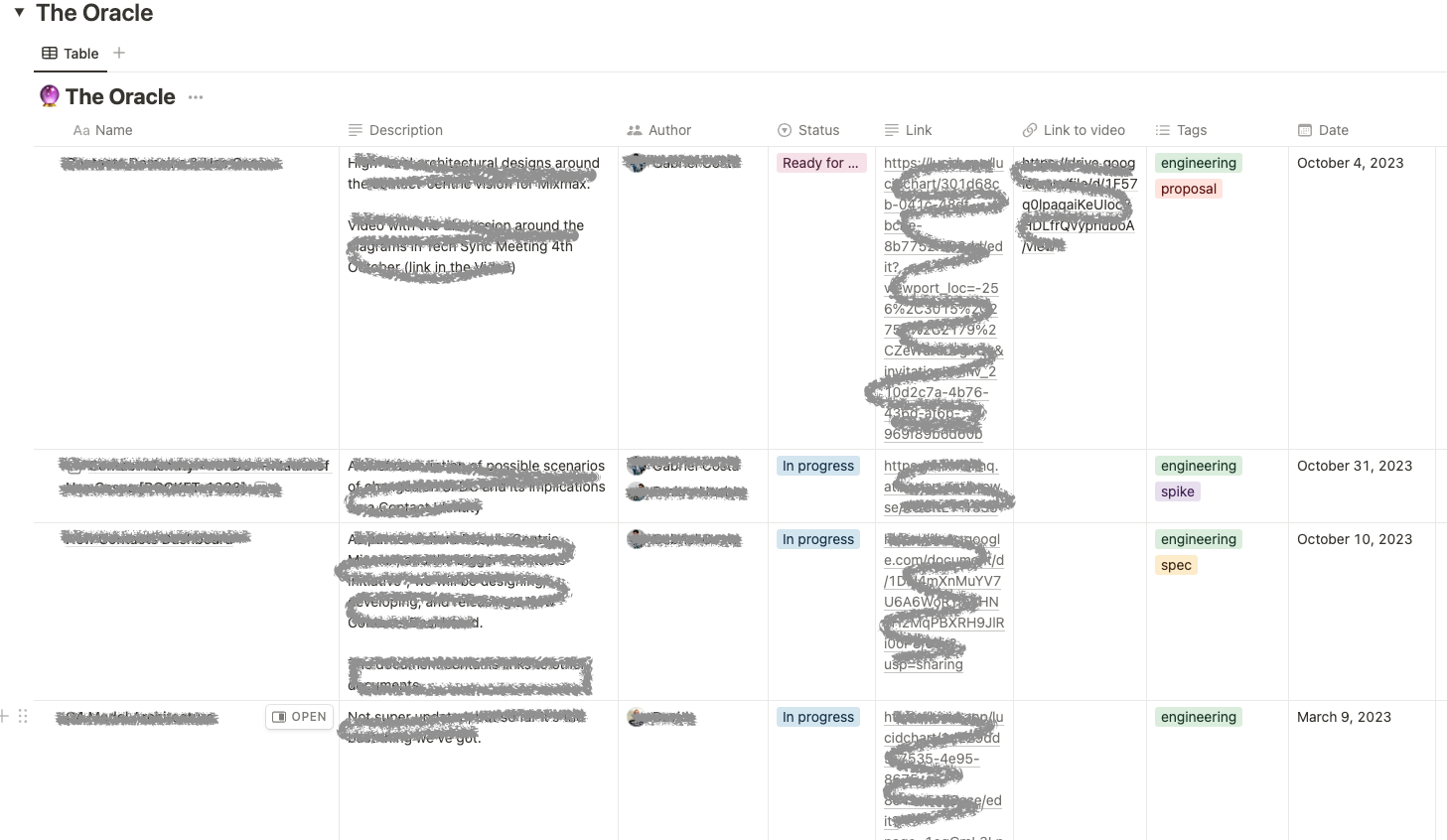In the fast-paced realm of startups and scaling companies, where every decision matters, the need to document and explicitly outline team priorities becomes paramount. Without well-defined processes, the team risks investing invaluable time in redundant discussions or drowning in a sea of outdated and neglected documentation. This gets even more important in fully distributed companies like Mixmax, because the opportunities to get together, even online, are limited, and so we rely even more on written communications.
Team Rocket operates as a crucial product team at Mixmax, overseeing CRM integrations (such as Salesforce) along with vital components like Contacts and Rules. Our responsibilities span various domains, encompassing the implementation of new features, management of tech debt, and handling support tickets. This multifaceted approach ensures customer satisfaction while propelling the continuous evolution of our product.
The Oracle and The Highway are two of the tools that we use in the team to help us guide our remote team through the labyrinth of information and priorities.
The Oracle: Your Guide Through the Documentation Maze
As a team expands beyond 10 engineers, maintaining clear communication becomes challenging. The natural response is to enhance documentation. Consequently, teams begin documenting various aspects: processes, architecture, business domain, decisions, and technical discussions. Fast forward a year, determining the relevance of documents becomes unclear, and accessing vital information becomes a hurdle without specific search knowledge, with documentation scattered across multiple platforms and formats.
The Oracle functions as an index encompassing all team-generated content. It includes additional metadata offering future context and information. Its implementation varies based on team requirements. Below is a screenshot exemplifying how it appears for our team:

In our setup, each document in The Oracle contains essential details like the name, a brief description, authorship, tags for filtering, creation or update date, and a status indicating if it's a draft, work in progress, archived, or deprecated. Additionally, it includes a link to the document itself, ensuring centralized access regardless of the format or platform.
To uphold this system, a simple process is established: whenever someone creates content, they add an entry to The Oracle along with its metadata. Upon document updates, the metadata undergoes review. Additionally, to account for potential process gaps, scheduling periodic checks to review the index ensures information remains current and accurate.
The advantages are manifold:
- Location Flexibility: Document storage changes (e.g., migration from Confluence to Notion) won't disrupt access.
- Universal Access: Provides a consistent starting point for anyone seeking information, irrespective of their search intent.
- Simplified Documentation View: Offers a straightforward overview of our documents, allowing easy filtering, sorting, and navigation.
- Discussion and Decision Trail: Maintains a comprehensive history of discussions and decisions, facilitating easy understanding of precedence.
The Highway: Paving the Way to Address Tech Debt
Balancing new developments, support tickets, and the technical advancement of our platform led to constant distractions among the team concerning priorities.
The Highway, inspired by the principles of Getting Things Done (GTD), revolves around prioritization. GTD emphasizes clearing mental clutter by employing a task management system, freeing the mind from tracking pending tasks. Similarly, The Highway serves as a space where engineers can deposit ideas, suggestions, innovations, concerns, or tech-debt, regardless of their status, allowing them to defer these thoughts and focus on immediate tasks.
As with The Oracle, the final implementation will depend on the team’s needs. This is how The Highway looks for our team.

However, this marks just the initial phase; what comes next? Here's our team's process:
- Every eight weeks, we hold a technical session, collectively setting priorities for each entry and pinpointing our utmost priority. The method of selection is team-determined; our preference lies in utilizing the RICE technique. By evaluating Reach, Impact, Confidence, and Effort, we derive a numeric value for sorting our table.
- Once we identify our top priority from the list, we allocate a portion of our sprint time over the next eight weeks to address it. Subsequently, we reassess our list and iterate.
Benefits derived from this approach:
- Engineers have a structured process, providing assurance that their ideas won't slip through the cracks.
- While guided by Product, we allocate dedicated time to engineering tasks that might otherwise be deprioritized.
- Offers a platform for collective discussions on the technical roadmap.
- Serves as a historical record of past team efforts and their impact.
Conclusion
In the fast-paced realm of engineering, having the right tools is paramount. The Oracle and The Highway serve as our dynamic duo, empowering us to conquer challenges, maintain a structured workflow, and ultimately deliver high-quality solutions efficiently.
Interested in joining the team? Visit Mixmax Careers.



